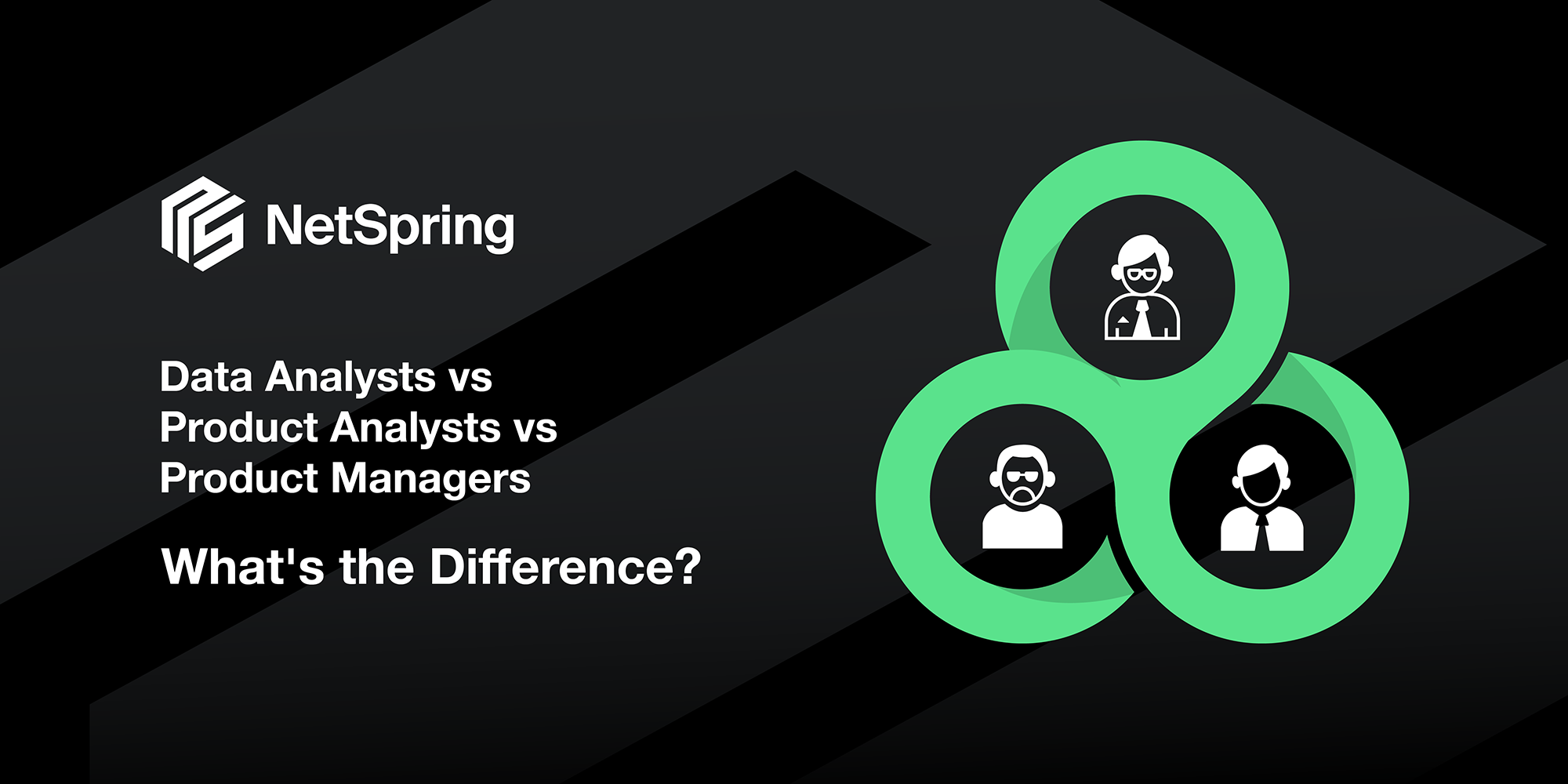At modern enterprises with access to massive datasets, the ability to turn data into actionable insights is critical. At product-led (PLG) businesses in particular, multiple roles have emerged to work with product data, and three of the most common are data analysts, product analysts, and product managers. Though each role brings its own unique skill set and focus to the team, they may have overlapping responsibilities, which can cause confusion about what the differences actually are. You might see any of these roles pulling data on user analytics to inform the product roadmap or building dashboards to track the most common drivers of user churn.
However, while these roles have their overlaps and the exact responsibilities vary from company to company, it’s useful to understand the differences and what value they each can provide.
Data analysts
Data analysts are broadly responsible for using data to enhance business operations, making sense out of the vast amounts of data that companies generate every day. They use tools and techniques like statistical analysis and data visualization to identify patterns and trends that might not be immediately obvious and then communicate those insights to the business.
The exact nature of those insights depends on the company and the team the data analyst is working with. Data analysts may work closely with product teams, including product managers and developers, to provide user insights and track metrics. But they may also work with sales or marketing, analyzing sales numbers or customer purchase behaviors to connect companies to new markets. They could also work with internal consulting teams to help the business track their performance over time and make informed decisions about operations.
Data analysts will often have a background in fields like mathematics, statistics, economics, or data science, as these provide many of the base skills required. In addition to the analytical skills needed to understand and make sense of data, they need technical and programming knowledge for working with datasets and strong communication for presenting their findings.

Product analysts
Product analysts are similar to data analysts but focus specifically on product-led business performance. They use data to gain insight about the product, e.g., to understand how users interact with it, identify opportunities for improvement, or measure the impact of product changes. Product analysts work closely with product managers and designers to ensure that products meet the needs of customers, provide a great user experience, and drive revenue.
Product analysts often help teams understand their users. By identifying important segments or where metrics are underperforming, product analysts can help product teams tailor the experience to users’ particular needs. To improve retention, they can provide insights on where users are struggling or dropping out of the funnel.
Product analysts also help companies optimize their product features. They can identify which features are being used the most and which ones are being ignored. This information can be used to prioritize feature development and make informed decisions about product roadmaps, packaging, and pricing.
As they are similar roles, product analysts will often have similar backgrounds to the ones listed above for data analysts. However, product analysts usually have more experience with tools and techniques commonly used in product management, design, or development, for instance A/B testing or other user research methods. Familiarity with the product and experience with user psychology or design may also be helpful when translating analytical findings into product insights.
Product managers
Product managers (PMs) oversee the strategy and delivery of a product. They are the “voice of the customer” and are responsible for understanding user and business needs and translating them into a product roadmap. They work closely with cross-functional teams to define the product vision and determine the features and functionality that users need from the product. They then guide the execution of the product, often working with engineering, design, and marketing teams to ensure a timely, successful launch.
Though it’s not the only factor they consider, product managers frequently look at user data to guide feature prioritization and product development. If they need to run deep investigations, PMs often will rely on product or data analysts to do so, because those analysts are likely more familiar with the data, how to access it, and how to properly use statistical methods to analyze it. For teams without analysts, a PM will either have to run these analyses themselves or leverage an out-of-the-box product analytics tool. PMs then synthesize these insights and combine them with their broader understanding to make decisions.
Growth product managers in particular will be most similar to product analysts. Whereas many PMs’ duties are focused on overall product development, growth product managers are tasked with driving metrics like acquisition, retention, or revenue. Specifically, they define measurements and run experiments to improve a company’s growth. This role typically requires strong analytical skills and growth product managers work closely with analysts to identify opportunities. To capitalize on those opportunities, they still need an understanding of the product and users as well as the ability to execute quickly.
PMs can come from a wide range of backgrounds depending on the product, but often they have engineering, business, or design experience. While analytical abilities are helpful, skills in areas like user experience, leadership, and communication will be more important to product managers as compared to the analyst roles above.
Common Tools
Each of these roles may use different tools to support their roles, though some span all three. Data analysts will often use general-purpose SQL and BI tools to interact directly with the data. They may also create dashboards for others in the company to view and use. Product analysts will likely also be proficient in these tools and often work with product analytics tools as well, which may be less flexible but can provide more context on user behavior and how the product is being used. PMs usually leverage out-of-the-box reports generated by those product analytics tools and look at the dashboards created by data or product analysts.
While each role has their own proficiencies and tools to match, the proliferation of different tools for different users can lead to data duplication and inconsistencies. NetSpring offers a warehouse-native app for self-service product analytics and BI-style ad hoc visual exploration – against the single source of truth. This platform is fully extensible, supporting ANSI SQL for the most sophisticated analysis, making it useful and accessible for PMs, product analysts, and data analysts alike. Request a demo today!











